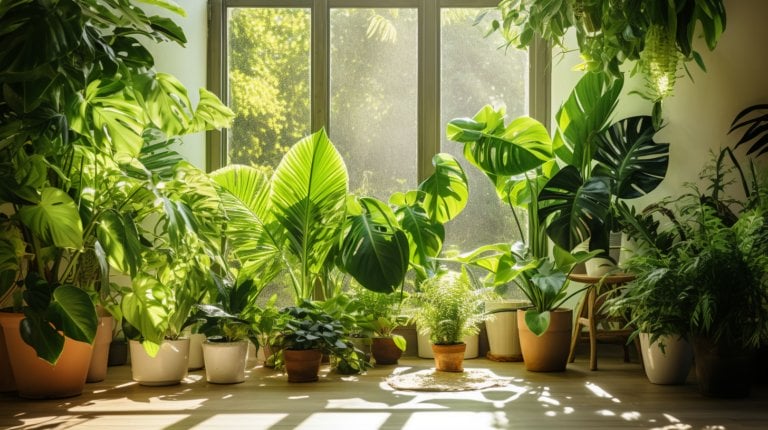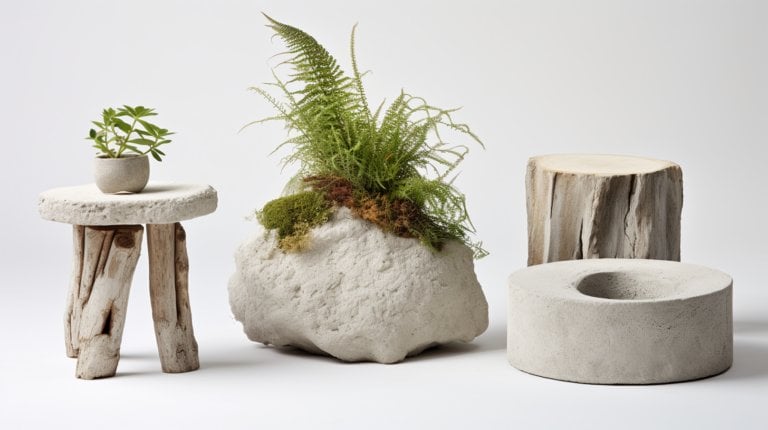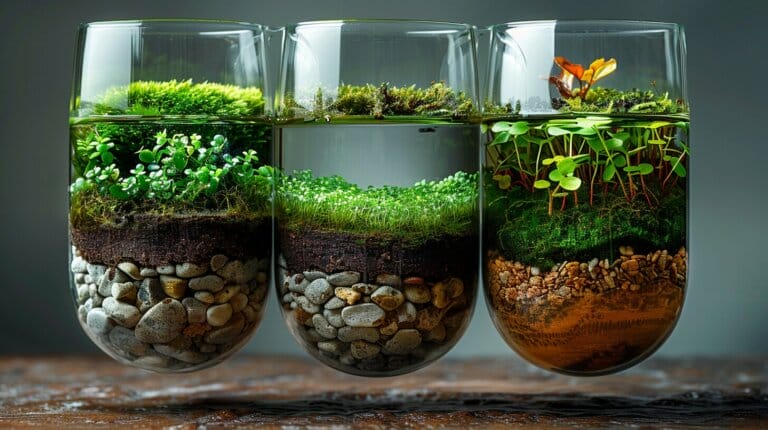Purple Flower That Looks Like a Bell: A Guide to Purple Bell-shaped Flowers
Purple flowers have always had a unique allure, mesmerizing onlookers with their striking beauty. They are often symbolic of honor and respect, which makes them an ideal selection for commemorating military and memorial events. Their representation of esteem and love is another charming attribute that never fails to captivate me. Particularly, the bell-shaped ones are incredibly stunning. In this article, we’ll explore the enchanting world of the purple, bell-shaped flowers and learn how their fascinating beauty can enhance your wellbeing! Despite their pleasing aesthetics, the intriguing scientific information about them makes them even more alluring.
In this article, I’ll take you on a journey exploring these unique blooms, how to grow them, and how they can add a magical touch to any garden. Let’s delve into the world of purple flower that looks like a bell!
Key Takeaways
- The Canterbury Bell Flower is popular due to its historical ties to the Canterbury tales, rich folklore, vibrant color, and bell-shaped blooms.
- Coral Bells are perennial plants with bell-shaped purple flowers that are easy to maintain and bloom from spring to fall.
- Several purple florals look like bells, including Campanula, Bluebell, Grape Hyacinth, and Balloon Flower.
- Cultivating bell flowers requires perfect growing conditions, proper planting and care, regular watering and pruning, and protection from pests and diseases.
Unveiling the Wonders of Purple Bell-Shaped Flowers

Let’s uncover the magic of purple bell-shaped flowers, starting with their rich variety. We’ll touch on why the Canterbury Bell Flower is such a crowd favorite and then move on to the distinctive traits of the Coral Bells. It’s a journey into the fascinating world of these unique blossoms that’s sure to intrigue and inspire.
Exploring the diversity of Purple Flower That Looks Like a Bell
I’ve come across a wide array of purple bell-shaped flowers in my travels, each with its own unique charm and beauty. Exploring the diversity of purple bell-shaped flowers has opened my eyes to the impressively varied types of bell-shaped flowers.
From the deep, rich purples of the Canterbury Bells to the delicate lilac shades of the Balloon flower, each purple bloom that looks like a bell has a unique allure. Let’s look at some examples:
| Flower | Shades of Purple |
| Canterbury Bells | Deep, Rich Purple |
| Balloon Flower | Delicate Lilac |
| Bellflower | Vibrant Violet |
Their diversity is not merely in their shades of Purple but also in their unique shapes, sizes, and growth habits. This journey through the world of bell-shaped flowers has been nothing short of fascinating.
The story behind the popularity of the Canterbury Bell Flower
In my quest for knowledge, I’ve discovered that the popularity of the Canterbury Bell Flower isn’t merely due to its vibrant color but also its rich folklore and easy cultivation process.
This purple flower that looks like a bell is steeped in tradition, with historical ties to the Canterbury tales. Its bell-shaped flowers aren’t just a visual spectacle, but they’re also associated with many tales, giving the flower a mystical aura.
The ease with which it grows, even for novice gardeners, adds to the popularity of the Herbaceous perennial with bell-shaped blooms. The story behind the popularity is intriguing, and it’s no wonder that this flower continues to capture the hearts of many. Its allure lies in more than just its color and shape. It’s a symbol steeped in history and beauty.
Understanding the unique characteristics of the Coral Bells
While I’m enthralled by the charm of the Canterbury Bell Flower, I can’t overlook the unique characteristics that make the Coral Bells (Heuchera) another fascinating purple floral that looks like a bell. Known as a perennial plant, the Coral Bells possess bell-shaped flowers for your garden that are visually captivating and easy to maintain.
To master the art of gardening, understanding the unique characteristics of each flowering plant is crucial. In the case of Heuchera, here’s a quick rundown:
| Unique Characteristics | Coral Bells |
| Plant Type | Perennial |
| Flower Shape | Bell-Shaped |
| Color | Purple |
| Care Level | Easy |
| Bloom Time | Spring to Fall |
With this knowledge, you’re one step closer to mastering the Coral Bells, a fascinating addition to any garden. Know the plants who can thrive best with Heuchera or Coral Bells.
Identifying Purple Flowers That Look Like Bells

Let’s kick off our exploration of how to identify purple flowers that look like bells. We’ll start with a visual guide to spotting the Campanula, Bluebell, and Grape Hyacinth. We’ll also take a closer look at the unique shapes of the Balloon Flower and Guinea Hen Flowers and learn how to distinguish the distinctive Foxglove flowers.
Visual guide to identifying Campanula, Bluebell, and Grape Hyacinth
How can you distinguish between a Campanula, a Bluebell, and a Grape Hyacinth when they all look like beautiful purple bell-shaped flowers?
Let’s start with the Campanula. This flower is characterized by its open star-shaped flowers and thin stems.
The Bluebell, on the other hand, has a distinctive drooping look, with the bells arranged in a loose spiral around the stem. Finally, the Grape Hyacinth stands out with its tight clusters of dense, bell-like blooms resembling a bunch of grapes.
This visual guide to identifying these purple blooms that look like bells should help you become a master at distinguishing them. Remember, the devil’s in the details when it comes to botany.
The unusual shape: A Deep Dive into Balloon Flower and Guinea Hen Flowers
Interestingly, I’ve found that Balloon Flowers and Guinea Hen Flowers, despite their unusual shapes, also fall into the category of purple flowers that resemble bells. These flowers aren’t only strikingly beautiful but also quite fascinating due to their distinctive bell-like shape.
Let’s take a deep dive into these particular flowers:
- Balloon Flower: Known for its balloon-like buds that burst open into deep Purple, bell-shaped flowers, it’s an absolute garden standout.
- Guinea Hen Flowers: They’re named because the petals fold inward, creating a bell shape that’s reminiscent of a guinea hen’s crest.
- Color: Both flowers share a deep purple hue, connecting them to the greater bellflower family.
- Unusual Shape: Their unique forms make these two species compelling examples in this exploration of bell-shaped flowers.
Signature leap: discerning the unique Foxglove flowers
I’m turning my attention to the Foxglove flower now, a purple bloom that’s not only bell-shaped but also boasts a unique pattern on its petals. These foxglove flowers are a sight to behold when they bloom in all their glory.
The bell shape of these purple blooms is distinctive, making them stand out among other species of plants. What’s more, the patterns on their petals, a mix of spots and streaks, provide a fascinating contrast to their overall hue. It’s this blend of form, pattern, and color that sets foxglove flowers apart.
If you’re looking to identify purple flowers that look like bells, the foxglove should be at the top of your list. Its uniqueness is an asset to any garden, adding a touch of whimsy and intrigue.
Cultivating Bell-Flowers: A Comprehensive Guide for Gardeners
Now, let’s move on to the joy of growing these beautiful bell-shaped flowers in our gardens. We’ll begin by discussing the perfect conditions these flowers require to thrive, and then I’ll share some expert tips on planting varieties like the Canterbury Bell Flowers and Campanula medium.
Lastly, we’ll explore how to maintain their vibrant purple hues through proper fertilizing and care.
Perfect conditions: Understanding the growing preferences of Bell Flowers
Cultivating bell flowers requires a keen understanding of their preferred growing conditions, which I’ll be discussing in this section. As plants with bell-shaped flowers, bell flowers thrive in specific environments.
- Sunlight: Bellflowers, especially the purple flower that looks like a bell, adore the full sun. They need at least six hours of sun daily for optimal growth.
- Soil: Well-draining, fertile soil is essential. Bellflowers won’t tolerate waterlogged conditions.
- Temperature: A temperate climate is ideal. Extreme heat or cold can be damaging.
- Water: Regular, consistent watering encourages healthy growth.
Understanding these perfect conditions and the growing preferences of bell flowers sets you on the path to successful cultivation. Watch your flowers grow and bloom in abundance.
Expert tips on planting Canterbury Bell Flowers, Campanula medium, and others
Before the sun sets, I’ll share some expert tips on planting Canterbury Bell Flowers, Campanula medium, and other bell flowers that bloom.
To start, these plants prefer a spot that gets full sun to partial shade. The soil should be well-draining and rich in organic matter. When planting, make sure to space them about 18 inches tall apart to allow for growth.
The Canterbury Bell, in particular, is a biennial plant, which means it usually flowers in its second year. The flowers typically appear from late spring to early summer. This plant produces clusters of bell-shaped flowers that can be pink, white, blue, or purple. Following these expert tips on planting will surely lead to a successful bell-flower garden.
Maintaining vibrant colors: fertilizing and caring for purple bell-shaped flowers
I’ve found that a gardener’s key to maintaining the vibrant colors of purple bell-shaped flowers lies in proper fertilization and care. The stunning bell-shaped flowers can grow to be the best plants in your garden, but only with the right conditions. Here’s my 4-step guide:
- Water: Keep the soil moist, but avoid overwatering as this can cause root rot.
- Fertilize: Use a balanced plant food to provide the nutrients these flowers crave.
- Sunlight: These flowers thrive in full sunlight but can handle partial shade.
- Prune: Regularly remove dead or dying blooms to encourage new growth.
With these steps, you can enjoy a purple flower that looks like a bell with truly vibrant colors all season long.
Creative Garden Designs with Bell-Shaped Flowers

Now, let’s unleash our creativity and explore how bell-shaped flowers can enhance our garden landscapes. We’ll draw inspiration from various arrangements featuring stunning species like Canterbury Bell, Heuchera, and others. And don’t worry. We’ll also cover how to plan for bell-shaped flowers in every season.
Unleashing creativity using Bell Flowers in your garden landscape
I’m about to share five ingenious ways to incorporate bell-shaped flowers into your garden design, unleashing a whole new level of creativity in your outdoor space. Here’s how to transform plants that produce stunning flowers into a unique landscape:
- Border Plants: Use bell-shaped flowers that grow low as a beautiful border, creating a sea of purple flowers that look like bells.
- Vertical Accents: Use taller species for a dramatic vertical accent.
- Rock Gardens: Tuck them into crevices in a rock garden for a whimsical touch.
- Containers: Finally, bell flowers thrive even in containers, adding a dash of color to your patio.
Inspiring arrangements: featuring Canterbury Bell, Coral Bells, and others
Often, I find myself drawn to the classic elegance of Canterbury Bells and the vibrant hues of Heuchera, yet there’s an entire world of bell-shaped flowers just waiting to be explored in your garden design.
For instance, the campanula flower, with its large bell-shaped blooms, is a captivating purple flower that looks like a bell. This flower can be used in various inspiring arrangements, featuring Canterbury Bell, Heucheras, and others. When combined, these flowers create a stunning visual symphony that’s both delightful and intriguing.
With a little creativity, you can mix and match these flowers in various colors, sizes, and forms to create unique and inspiring arrangements. Remember, it’s not just about the flower but the story it tells in your garden.
Bell-shaped flowers for every season: a garden planner’s guide
Let’s dive into the world of bell-shaped flowers for every season, and I’ll guide you through some creative garden designs that can truly transform your outdoor space.
Here’s a simple guide:
- Spring: Blue bell-shaped flowers, like Bluebells, are a great start. They’re easy to grow and add a touch of elegance.
- Summer: For a purple flower that looks like a bell, try Bellflowers or Canterbury Bells. Their royal hue will make your garden pop.
- Autumn: Many bell-shaped flowers, like Fuchsias, come in pink and purple. They’re perfect for adding a splash of color in the fall.
- Winter: For a resilient option, try Snowdrops. Their delicate, bell-shaped blooms can withstand colder climates.
Embrace bell-shaped flowers for every season: a garden planner’s guide to creating a vibrant garden year-round.
In-depth Look at the Unique Bell-Shaped Flowers: White Mountain Heather and Convallaria Majalis
Let’s turn our attention to two unique bell-shaped flowers: the White Mountain Heather, often referred to as the Scottish Jewel, and the delicate Convallaria Majalis.
We’ll explore what makes these two flowers so special, their unique characteristics, and their specific features. We’ll also discuss how these bell-shaped beauties fare across different climates and landscapes, adding versatility to your garden design.
The Scottish Jewel: introducing the White Mountain Heather
I’m excited to introduce you to a Scottish jewel, the White Mountain Heather, known for its unique bell-shaped flower bloom. This low-growing plant, part of a fascinating genus of plants, exhibits a harmonious blend of white and purple petals, which gives it a charming visual appeal.
Here’s an in-depth look at this captivating plant:
- Shape: Its tubular flowers are captivating and give it a distinct look.
- Color: The dark Purple at the base gradually fades to white at the top, creating a stunning visual effect.
- Genus: As part of the Erica genus of plants, it shares some common traits with other heathers.
- Height: Typically, they’re about 4 feet tall, but rather prefer to spread out, creating a carpet-like appearance.
The White Mountain Heather is a uniquely beautiful flowering plant.
The delicate ring: getting to know Convallaria Majalis
Now, we’re turning our attention to another bell-shaped beauty, Convallaria Majalis. Known not just for its delicate, bell-like flowers come spring but also for its rich, green foliage, this plant is indeed a sight to behold.
Commonly known as the lily of the valley, it’s one of those perennial flowers that blossom in the spring, producing a carpet of white blooms. Each flower head is like a small, delicate bell hanging from a stalk. The plant produces flowers in abundance, creating a spectacle that can’t be missed.
The suitability and use of bell-shaped flowers in different climates and landscapes
I’ve discovered that these two types of bell-shaped flowers, White Mountain Heather and Convallaria Majalis, show remarkable adaptability across a variety of climates and landscapes.
The White Mountain Heather, a purple flower that looks like a bell, thrives in cool alpine climates. It’s a low-maintenance plant that’s frost resistant, perfect for high-altitude landscapes.
The bell-shaped white blooms of Convallaria Majalis, on the other hand, prefer shaded woodland areas. These plants grow well in moist, fertile soil, making them suitable for temperate climates with regular rainfall.
Both types of flowers are low-maintenance plants, requiring minimal care once established. Understanding the suitability and use of bell-shaped flowers in different climates and landscapes can make your gardening journey more efficient and enjoyable.
Speaking of low-maintenance plants you can see our other article about easy-care hedge plants here.
Conclusion
So, there you have it.
Whether you’re a seasoned gardener or a budding enthusiast, cultivating purple florals that look like bells of Ireland is a rewarding endeavor. They’re not only striking but also add a magical touch to any garden.
The white blooms of Convallaria Majalis and the purple petals of White Mountain Heather are especially captivating. Remember, it’s your garden, so let your imagination run wild with bell-shaped flower designs.
Happy gardening!
Frequently Asked Questions
What Are Some Common Pests That May Affect Purple Bell-Shaped Flowers?
In my experience, common pests that affect bell-shaped flowers include aphids, snails, and slugs. They’re attracted to the plant’s nectar and can cause significant damage if they’re not appropriately managed.
Can Purple Bell-Shaped Flowers Grow in Indoor Conditions?
They can, I’ve successfully grown bell-shaped flowers indoors. They need bright, indirect light, good drainage, and consistent watering. Adjusting the room’s humidity and temperature can also help their growth.
How Does the Color of the Purple Bell-Shaped Flower Change With Seasons?
In my experience, the hue of such a flower may vary with the seasons. It’s typically more vibrant in spring and summer but can fade slightly in autumn and winter due to reduced sunlight.
Are There Any Medicinal Uses for These Bell-Shaped Flowers?
Indeed, bell-shaped flowers often have medicinal uses. For example, I’ve used them in teas for calming effects. However, it’s crucial to identify the exact species to ensure it’s safe and beneficial for consumption.
Can These Purple Bell-Shaped Flowers Grow Indoors?
I’ve successfully grown bell-shaped flowers indoors. They need bright, indirect light, good drainage, and consistent watering. Adjusting the room’s humidity and temperature can also help their growth.







